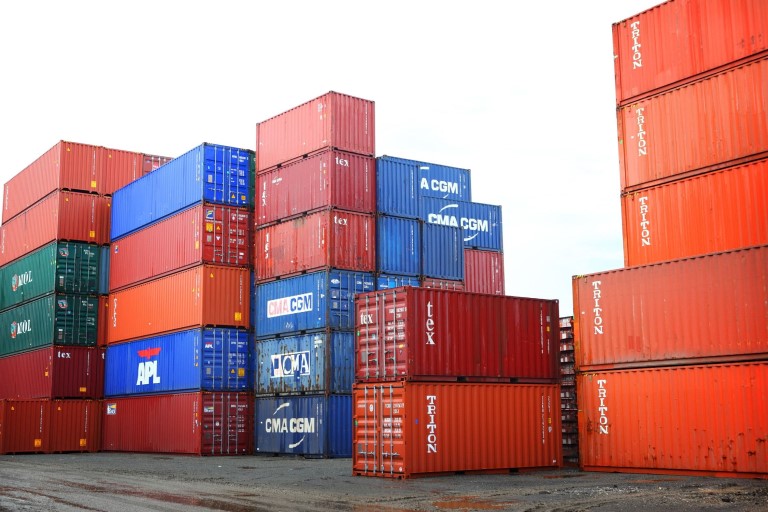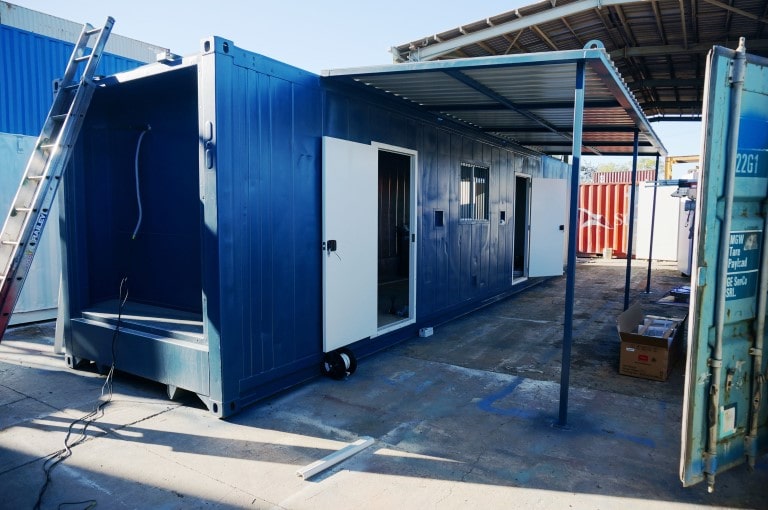As more and more people become concerned with emergency preparedness, shipping containers present an interesting use case as “bug out shelters.” The idea of a bug out shelter stems from the concept of nuclear “fallout shelters.” At its core, it’s essentially a backup location, where someone can temporarily retreat to for protection from natural or man-made disasters affecting their region.
There are several features that make shipping containers a compelling solution for an emergency shelter, but some of the foremost are: strength, low cost, and potential for off-grid power. Let’s examine each of these in turn:
1. Strength
Shipping containers are built to withstand some serious abuse. As many people know, the frame of a container is designed to have other containers stacked on it, in order to make transoceanic voyages. Additionally, the Corten steel that shipping containers are constructed from, is specifically engineered to withstand corrosion. This bodes well for preppers using these containers for emergency shelters.
Even without lots of overhauling or retro-fitting, these boxes are nigh indestructible. They are resistant to fire, and damage from storms and earthquakes. They also present a “hard target” to any other people that mean to do you harm.

2. Low Cost
While price is a relative subject, it’s fair to say that in the grand scheme of things, a structure built with shipping containers can mean significant cost savings. True, it will likely need to be retrofitted, but essentially, a shipping container is already a structure. More and more people are catching on to this fact, which is why it is increasingly common to see containers being modified for use in retail applications–as cafes, offices, boutique stores, and more.
Due to the import-heavy economy of many countries, there are thousands of shipping containers that make a single trip across the ocean, and then sit unused. Because of this surplus, it’s possible to get a very lightly-used shipping container at a great price.
People wanting to build a bug out cabin don’t want another house payment–they already have one. After all, that’s the point of having a backup shelter right? So using shipping containers as building blocks offers some serious upside for the pocketbook! This becomes even more important in cases where traditional financing is unavailable, and you will be paying for your bug out shelter in cash (or otherwise high-interest scenario).
%20(1).jpg)
3. Potential for Grid Independence
When designing and building a retreat shelter, the ability to be “off the grid” is important to many. For some people, this is important because utilities aren’t an option in the location they will be building. Other people want to have an off grid cabin because they figure that in a disaster situation, the grid very well might not exist anyway. Still others have moral and philosophical reasons for wanting to be grid independent.
No matter what the reasoning is, the potential for grid independence is a really compelling advantage of shipping container shelters. In large part, this potential comes from their size. A typical 40 ft shipping container works out to be 320 square feet. If you were to use 2, it’s still only 640 square feet. That’s incredibly small!
A small space means less area to heat and cool. It means less space for lights and electricity-drawing appliances. And it intrinsically means that fewer people will be occupying that space, and sucking power from the grid. With proper insulation, rainwater catchments, a wood stove for heating, and just a few highly-efficient appliances, a shipping container has fantastic potential for being off grid.
There are several other reasons why shipping containers make a great bug out shelter, but these are among the biggest. If you’re interested in exploring this concept further, check out the complete guide to shipping container bug out shelters. At the end of the day, a shipping container is just a really smart building block. How you use it, and what it ends up becoming, is only limited by the bounds of your creativity.
About the author:
Since 2010, Dan Carpenter has published articles, guides, and over 400 videos teaching people how to be self sufficient, on his site The Daily Prep. He is a Certified Permaculture Designer, and a major proponent of alternative housing and internationalisation.




